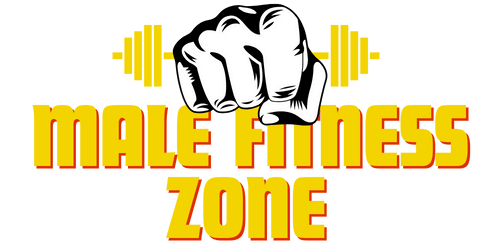Are you looking for effective techniques to help your muscles recover faster? If so, you’ve come to the right place! In this article, we will explore various methods to aid in muscle recovery after intense workouts or physical activity. Whether you’re a fitness enthusiast, an athlete, or simply someone who wants to optimize their muscle recovery process, we’ve got you covered. Discover practical tips and techniques that will leave you feeling rejuvenated and ready to tackle your next workout session with ease. So, let’s get started and explore the world of muscle recovery techniques together!
Nutrition for Muscle Recovery
Importance of Proper Nutrition
Proper nutrition plays a crucial role in muscle recovery. When you engage in intense physical activity, your muscles undergo stress and micro-tears, and proper nutrition helps in repairing and rebuilding these muscles. It also replenishes glycogen stores and provides energy for your body to perform optimally. Therefore, ensuring that you consume the right balance of macronutrients is essential for effective muscle recovery.
Macronutrients for Muscle Recovery
Macronutrients, namely protein, carbohydrates, and fats, are the building blocks of a healthy diet for muscle recovery.
Protein Intake
Protein is a vital nutrient for muscle recovery as it provides the building blocks, amino acids, needed for muscle repair and growth. Consuming an adequate amount of protein post-workout is particularly important to facilitate muscle protein synthesis. Lean sources of protein such as chicken, fish, eggs, and plant-based options like tofu and beans are excellent choices to incorporate into your diet.
Carbohydrate Intake
Carbohydrates are the primary fuel source for your muscles during exercise. Consuming enough carbohydrates after a workout helps replenish glycogen stores and supports muscle recovery. Opt for complex carbohydrates like whole grains, fruits, and vegetables, which provide a steady release of energy throughout the day.
Fat Intake
While often overlooked, dietary fats are crucial for muscle recovery as they aid in hormone production and provide insulation for the body. Focus on consuming healthy fats such as avocados, nuts, seeds, and olive oil to support overall health and promote optimal muscle recovery.
Hydration
Proper hydration is often underestimated but is vital for muscle recovery. Water helps in transporting nutrients to your muscles and assists in removing waste products. It also aids in maintaining joint mobility and overall bodily functions. Remember to drink an adequate amount of water throughout the day, especially during and after exercises, to keep your body hydrated and promote efficient muscle recovery.
Rest and Sleep
Importance of Rest
Rest is an essential component of muscle recovery. It allows your body to repair damaged tissues, replenish energy stores, and reduce inflammation. Skipping rest periods can lead to overtraining and hinder your progress. Incorporating rest days into your fitness routine is crucial to achieving optimal results and preventing injuries.
Allowing Time for Recovery
To maximize muscle recovery, it is important to allow sufficient time for recovery between workouts. This period enables your muscles to repair and grow stronger. While the exact recovery time varies depending on factors such as workout intensity and individual fitness levels, aiming for 48 to 72 hours of rest between intense training sessions is a good guideline.
Quality Sleep
Quality sleep is an often overlooked aspect of muscle recovery. During sleep, the body undergoes significant repair and regeneration processes. It is during this time that growth hormone is released, contributing to muscle repair and recovery. Aim for 7 to 9 hours of uninterrupted sleep each night to optimize your body’s recovery processes.
Sleep Duration
In addition to quality sleep, the duration of sleep also impacts muscle recovery. Adequate sleep duration allows for more cycles of REM (Rapid Eye Movement) and deep sleep, which are vital for tissue repair. Consistently achieving the recommended 7 to 9 hours of sleep per night will enhance your overall muscle recovery and promote optimal performance.

Stretching and Flexibility
Benefits of Stretching
Stretching is an important component of muscle recovery as it helps improve flexibility, range of motion, and blood circulation. By lengthening and elongating the muscles, stretching promotes muscle recovery and reduces the risk of injuries. It also helps alleviate muscle soreness and aids in relaxation after intense exercise.
Dynamic Stretching
Dynamic stretching involves active movements that prepare the body for physical activity. It improves muscle flexibility and increases blood flow to the muscles. Incorporating dynamic stretches into your warm-up routine before exercise can enhance muscle performance and aid in post-workout recovery.
Static Stretching
Static stretching involves holding a stretch position for a prolonged period. This type of stretching helps improve flexibility and relaxes the muscles after exercise. Performing static stretches at the end of your workout can assist in reducing muscle tension and promoting muscle recovery.
Proprioceptive Neuromuscular Facilitation (PNF) Stretching
PNF stretching combines passive stretching and isometric contractions to improve flexibility. This technique involves stretching a muscle to its maximum length, followed by contracting the muscle against resistance. PNF stretching can be beneficial for enhancing muscle recovery by increasing range of motion and promoting muscle relaxation.
Foam Rolling
Foam rolling, also known as self-myofascial release, is a form of self-massage that uses a foam roller to apply pressure to tight or sore muscles. This technique helps release muscle knots, improve blood circulation, and reduce muscle inflammation. Incorporating foam rolling into your post-workout routine can enhance muscle recovery and alleviate muscle soreness.
Active Recovery
Active Rest Days
Active rest days involve engaging in low-intensity activities to promote muscle recovery while remaining active. This could include activities such as gentle stretching, yoga, or walking. Active rest days facilitate blood circulation, promote muscle relaxation, and help prevent muscle stiffness.
Low-Intensity Exercise
Engaging in low-intensity exercise, such as light jogging or cycling, can aid in muscle recovery by increasing blood flow to the muscles. This increased blood flow helps deliver essential nutrients and oxygen to the muscles, accelerating the recovery process. Incorporate low-intensity exercises into your recovery routine to promote muscle repair and reduce post-workout soreness.
Yoga and Pilates
Yoga and Pilates are excellent forms of low-impact exercise that contribute to muscle recovery. These practices focus on stretching, strengthening, and balancing different muscle groups, promoting flexibility and improving mind-body connection. Including regular yoga or Pilates sessions in your fitness routine can enhance muscle recovery and overall well-being.
Swimming
Swimming is an effective form of low-impact exercise that provides cardiovascular benefits while minimizing stress on the joints. The buoyancy of the water reduces the impact on muscles and joints, making it an ideal activity for muscle recovery. Swimming helps increase blood flow and promotes relaxation, enabling the muscles to recover more effectively after intense workouts.
Cycling
Cycling is a low-impact exercise that can be effective for muscle recovery. It provides a cardiovascular workout while minimizing strain on the joints. Cycling helps increase blood flow to the muscles, delivering essential nutrients and oxygen for optimal recovery. Incorporating cycling into your recovery routine can facilitate muscle repair and reduce fatigue.

Cold Therapy
Ice Baths
Ice baths, also known as cold water immersion, involve immersing your body in cold water for a specified duration. The cold temperature helps reduce inflammation, alleviate muscle soreness, and promote muscle recovery. Ice baths can constrict blood vessels, reducing swelling and flushing out waste products from the muscles.
Cryotherapy
Cryotherapy involves exposing the body to extremely cold temperatures for a short period. This treatment can be in the form of whole-body cryotherapy or localized cryotherapy using targeted cold air or ice packs. Cryotherapy promotes muscle recovery by reducing inflammation and muscle soreness. It can also improve circulation and enhance the body’s natural healing processes.
Cold Showers
Taking cold showers after a workout is a simple and accessible form of cold therapy. The cold water helps decrease muscle inflammation and promote muscle recovery. Cold showers constrict blood vessels, reducing swelling and flushing out metabolic waste products from the muscles. Adding cold showers to your post-workout routine can aid in muscle recovery and provide a refreshing sensation.
Benefits of Cold Therapy
Cold therapy offers numerous benefits for muscle recovery. It helps reduce muscle inflammation, alleviate muscle soreness, and decrease recovery time after intense physical activities. Cold therapy also helps minimize muscle damage and speeds up the removal of waste products from the muscles. Incorporating cold therapy techniques into your recovery routine can enhance muscle recovery and optimize athletic performance.
Application Techniques
When applying cold therapy, it is important to strike a balance between effectiveness and safety. If using ice baths or cryotherapy, follow the recommended guidelines for duration and temperature. For cold showers, gradually decrease the water temperature for a few minutes and allow your body to adjust. Avoid extreme temperatures and always listen to your body’s response to cold therapy.
Massage and Foam Rolling
Benefits of Massage
Massage therapy is a well-known technique for muscle recovery. It involves manipulating the soft tissues of the body to improve circulation, relieve muscle tension, and reduce stress. Massage enhances muscle recovery by increasing blood flow, promoting lymphatic drainage, and reducing muscle soreness. It also helps in relaxation and aids in eliminating toxins from the muscles.
Types of Massage
Various types of massage can be effective for muscle recovery.
-
Swedish massage: This gentle and relaxing massage uses long, gliding strokes to improve blood circulation and promote muscle relaxation.
-
Deep tissue massage: This technique focuses on deeper layers of muscle tissues to release tension and alleviate chronic muscle pain.
-
Sports massage: Specifically designed for athletes, sports massage targets areas of the body subjected to repetitive movements and intense physical activity. It helps in preventing injuries, reducing muscle soreness, and enhancing muscle recovery.
Self-Massage Techniques
Self-massage techniques can complement professional massage therapy and provide targeted relief for muscle recovery. Using your hands, foam rollers, or massage balls, you can apply pressure to specific areas of muscle tension or soreness. Self-massage helps increase blood flow, reduces muscle knots, and contributes to overall muscle relaxation.
Using Foam Rollers
Foam rolling, as mentioned earlier, is a self-myofascial release technique using a foam roller. By applying pressure to tight or sore muscles, foam rolling helps release knots and adhesions, improving range of motion and flexibility. Incorporating foam rolling into your post-workout routine promotes efficient muscle recovery, reduces muscle soreness, and enhances overall muscle performance.
Trigger Point Therapy
Trigger point therapy targets trigger points, which are sensitive areas within tight muscle fibers. Applying pressure to these trigger points helps release tension and alleviate muscle pain. This technique can be performed using your fingers, foam rollers, or massage balls. Trigger point therapy enhances muscle recovery by reducing muscle tension and promoting muscle relaxation.
Heat Therapy
Heating Pads
Heating pads are a convenient way to apply heat therapy to sore muscles. The warmth from the heating pad helps increase blood flow, relaxes muscles, and reduces muscle stiffness. Heat therapy can be effective for muscle recovery after intense workouts or to alleviate muscle pain and tightness.
Hot Showers
Hot showers can be a quick and accessible form of heat therapy for muscle recovery. The warm water helps relax muscles, increase blood flow, and alleviate muscle soreness. Taking a hot shower after a workout can aid in muscle recovery and provide a soothing effect on tired muscles.
Saunas
Saunas provide dry heat that promotes muscle relaxation and detoxification. The high temperature encourages blood vessels to dilate, increasing blood flow and oxygen delivery to muscles. Sauna use can enhance muscle recovery by reducing muscle soreness, improving circulation, and aiding in relaxation. However, it is important to stay hydrated and follow recommended guidelines for sauna use.
Benefits of Heat Therapy
Heat therapy offers several benefits for muscle recovery. Applying heat helps relax muscles, increase blood flow, and alleviate muscle stiffness and soreness. Heat therapy can also improve flexibility, promote joint mobility, and reduce the risk of injuries. Incorporating heat therapy techniques into your recovery routine can enhance muscle recovery and improve overall performance.
Precautions to Take
While heat therapy can be beneficial, it is important to take certain precautions. Avoid applying excessive heat to the body as it can lead to burns or worsen inflammation. Monitor the temperature and duration of heat exposure to ensure it remains within a safe range. If you have any existing medical conditions, consult with a healthcare professional before using heat therapy techniques to ensure they are suitable for your specific situation.
Supplements for Muscle Recovery
Role of Supplements
Supplements can be used as a complement to a balanced diet to support muscle recovery. They provide essential nutrients and compounds that aid in muscle repair, reduce inflammation, and enhance overall recovery processes. However, it is important to note that supplements should not replace a healthy diet but rather be used as an additional support.
Protein Powders
Protein powders, such as whey, casein, or plant-based options, can be convenient sources of protein for muscle recovery. They provide a quick and easily digestible form of protein, which is essential for muscle repair and growth. Protein powders can be consumed post-workout or incorporated into meals and snacks to ensure an adequate protein intake for optimal muscle recovery.
Branched-Chain Amino Acids (BCAAs)
BCAAs are a group of essential amino acids that play a crucial role in muscle recovery. They are readily absorbed by the muscles and help stimulate muscle protein synthesis, reducing muscle damage and promoting muscle repair. BCAAs can be consumed in supplement form or found naturally in foods such as eggs, lean meats, and legumes.
Creatine
Creatine is a naturally occurring compound in the body that aids in energy production during high-intensity exercise. It can also support muscle recovery by replenishing ATP (adenosine triphosphate) stores and reducing muscle damage. Creatine supplements are commonly used by athletes and weightlifters to enhance muscle recovery and improve performance.
Omega-3 Fatty Acids
Omega-3 fatty acids, commonly found in fish oil supplements, have anti-inflammatory properties that can aid in muscle recovery. They help reduce exercise-induced muscle soreness, promote joint health, and support overall muscle function. Consuming omega-3 fatty acids through supplements or incorporating foods such as fatty fish, flaxseeds, and walnuts into your diet can enhance muscle recovery.
Glutamine
Glutamine is an amino acid that plays a vital role in muscle repair and recovery. It helps maintain muscle tissue integrity, supports immune function, and reduces muscle soreness. Glutamine supplements can be used to enhance muscle recovery, especially during periods of intense training or high-stress levels.
Avoid Overtraining
Causes and Dangers of Overtraining
Overtraining occurs when the body is subjected to excessive physical stress without adequate time for recovery. This can lead to a range of negative effects, including decreased muscle strength, increased risk of injuries, hormonal imbalances, and mental fatigue. Overtraining can hinder muscle recovery and negatively impact overall health and performance.
Recognizing Symptoms of Overtraining
Recognizing the symptoms of overtraining is important to prevent further damage and allow for necessary recovery. Symptoms can include persistent fatigue, decreased performance, frequent injuries or illnesses, sleep disturbances, mood swings, and loss of motivation. Paying attention to these signs and allowing for proper rest and recovery can help prevent overtraining.
Importance of Rest Days
Rest days are essential to prevent overtraining and promote optimal muscle recovery. Incorporating planned rest days into your training routine allows your body to repair and rebuild muscles, replenish energy stores, and reduce the risk of overuse injuries. Rest days also help restore mental focus and motivation, ensuring you are ready to perform at your best during subsequent workouts.
Listening to Your Body
Listening to your body’s signals is crucial for effective muscle recovery and injury prevention. Pay attention to how your body feels during and after workouts. If you experience excessive fatigue, muscle soreness, or decreased performance, it may be a sign that you need more rest. Adjust your training intensity, duration, or frequency accordingly and prioritize rest when needed.
Training Intensity and Volume
Finding the right balance between training intensity and volume is key to preventing overtraining and optimizing muscle recovery. Gradually increase the intensity and volume of your workouts to allow your body to adapt and recover. Avoid excessive increases in intensity or volume, as this can lead to overtraining. Incorporate recovery periods, variations in training intensity, and cross-training activities to promote effective muscle recovery and prevent overtraining.
Other Recovery Techniques
Hydrotherapy
Hydrotherapy involves the use of water for therapeutic purposes. This can include techniques such as contrast showers, where alternating hot and cold water is used, or immersing the body in water at varying temperatures. Hydrotherapy enhances blood circulation, reduces inflammation, and promotes muscle relaxation, aiding in muscle recovery.
Acupuncture
Acupuncture is an ancient Chinese practice that involves the insertion of thin needles into specific points on the body. This technique stimulates the nervous system, promoting the release of endorphins and reducing pain and muscle tension. Acupuncture can be beneficial for muscle recovery, reducing inflammation, and enhancing overall well-being.
Electrotherapy
Electrotherapy, also known as electrical muscle stimulation (EMS), involves the use of electrical impulses to stimulate muscle contraction. This technique aids in muscle recovery by increasing blood flow, reducing muscle soreness, and promoting muscle relaxation. Electrotherapy can be particularly useful for muscle recovery after injuries or during rehabilitation.
Active Release Technique (ART)
Active Release Technique (ART) is a soft tissue mobilization technique that targets specific muscles, tendons, or ligaments to restore their normal function. This technique involves applying manual pressure to affected areas while performing specific movements. ART can help release tension and adhesions in muscles, promoting muscle recovery, and alleviating pain.
Chiropractic Care
Chiropractic care involves the manipulation of the spine and musculoskeletal system to improve joint mobility, reduce pain, and enhance overall well-being. Regular chiropractic adjustments can help align the spine and alleviate muscle tension, contributing to effective muscle recovery and improved physical performance.
In conclusion, effective muscle recovery involves a comprehensive approach that encompasses proper nutrition, rest and sleep, stretching and flexibility exercises, active recovery techniques, cold and heat therapy, supplements, and avoiding overtraining. By incorporating these techniques into your recovery routine, you can promote optimal muscle recovery, reduce muscle soreness, and enhance your overall fitness and performance. Remember to listen to your body, prioritize rest, and seek professional guidance when necessary.



